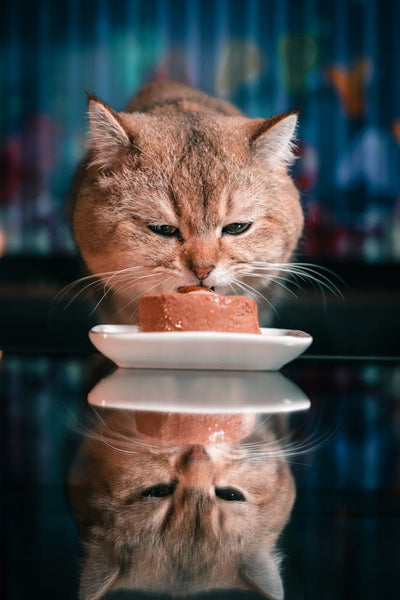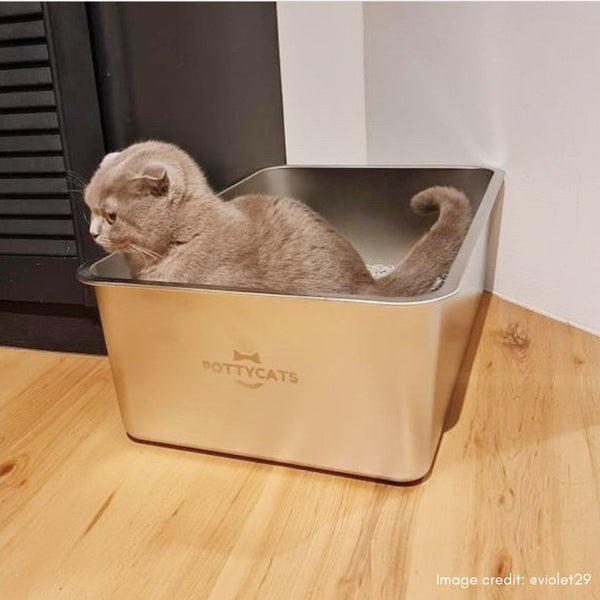
If you're a cat owner, you’ve probably encountered a hairball or two—and, let's be honest, it’s not the most pleasant thing to clean up. Hairballs are a common issue for cats, but many pet owners may not fully understand why they form or what can be done to minimize them. In this blog, we'll dive into the causes of hairballs, why they happen, and offer tips on preventing them from becoming a frequent nuisance.
1. What Is a Hairball?
A hairball, also known as a "trichobezoar," is a clump of hair that a cat has ingested and then regurgitated. This happens when cats groom themselves and swallow loose fur while licking their coats. Since cats have rough tongues designed to pull hair out during grooming, they tend to swallow a fair amount of it. Most of the time, this fur passes through the digestive system and is eventually excreted in the cat’s stool. However, sometimes it forms a ball in the stomach that the cat can’t digest, leading to the classic hairball that they hack up.
2. Why Do Hairballs Form?
The primary reason for hairballs is a cat’s grooming behavior. Cats are meticulous groomers and spend a large part of their day licking themselves clean. This is important for their hygiene, but it also means they end up ingesting fur, which can accumulate in their stomach over time.
Here are some specific reasons why hairballs form:
- Frequent Grooming: Long-haired cats (like Persians or Maine Coons) and even some short-haired breeds groom themselves more often, increasing the likelihood of ingesting fur. Long-haired cats are especially prone because their coats have more loose hair.
- Seasonal Shedding: Cats tend to shed more during certain times of the year, particularly in the spring and fall. This is when hairballs tend to be more common because there’s an abundance of loose fur in the environment.
- Health Issues: Excessive grooming or an increase in hairballs can sometimes indicate an underlying health issue, such as allergies, skin problems, or even stress. Cats may groom excessively to soothe themselves when they're not feeling well.
3. Are Some Cats More Prone to Hairballs Than Others?
Yes, some cats are more likely to develop hairballs than others. Long-haired breeds are particularly vulnerable, as they have more hair to shed and groom. Examples include:
- Persians
- Maine Coons
- Ragdolls
- Medium to long-haired mixed
Short-haired cats are less likely to develop hairballs, but it doesn’t mean they’re immune. Cats with overactive grooming habits or health issues are still at risk, regardless of coat length.
4. When Is Hairball Formation a Problem?
Occasional hairballs are normal, but frequent or severe hairballs can be a sign that something is wrong. If your cat is coughing up hairballs more than usual, or if they seem to be having difficulty passing them, it could indicate a digestive issue or other health problems. Hairballs that don’t pass easily may cause vomiting, choking, or even lead to intestinal blockages in severe cases.
Signs that your cat’s hairballs may be problematic include:
- Increased frequency of hairballs (more than once a week)
- Excessive vomiting or gagging
- Straining or discomfort while attempting to pass hairballs
- Changes in behavior, such as lethargy or loss of appetite
If you notice any of these symptoms, it’s best to consult a veterinarian to rule out any underlying conditions.
5. How Can You Prevent Hairballs?
While it’s impossible to completely eliminate hairballs in cats, there are several things you can do to help reduce their occurrence and ensure your cat is as comfortable as possible:
- Regular Grooming: One of the most effective ways to prevent hairballs is regular brushing. Brushing your cat removes loose fur before it can be ingested. Long-haired cats, in particular, should be groomed daily or at least a few times a week.
- Diet: Some dry cat foods are formulated to help with hairball management. These foods typically contain more fiber, which helps move hair through the digestive system more efficiently.
- Hydration: Keeping your cat hydrated is essential. Water helps to keep their digestive system functioning properly, reducing the likelihood of hairballs forming. Ensure your cat always has access to fresh water.
-
Hairball Remedies: There are special pastes and gels available that you can give to your cat to help them pass hairballs more easily. These remedies generally contain lubricants that help the fur travel smoothly through the digestive tract. Two remedies that really helped us are Gim Cat malt-soft paste extra and Ciao hairball paste in a tube.
- Vet Check-ups: If your cat is having frequent hairballs or is showing signs of discomfort, regular vet visits are essential. A vet can assess whether your cat’s grooming habits are related to a health issue, such as allergies or gastrointestinal problems.
6. When Should You Be Concerned About Hairballs?
If hairballs become more frequent or problematic, or if your cat is having difficulty passing them, it’s time to see the vet. In rare cases, hairballs can cause obstructions that require medical intervention. A veterinarian can offer guidance on how to manage your cat’s hairballs and check for any underlying health issues.



